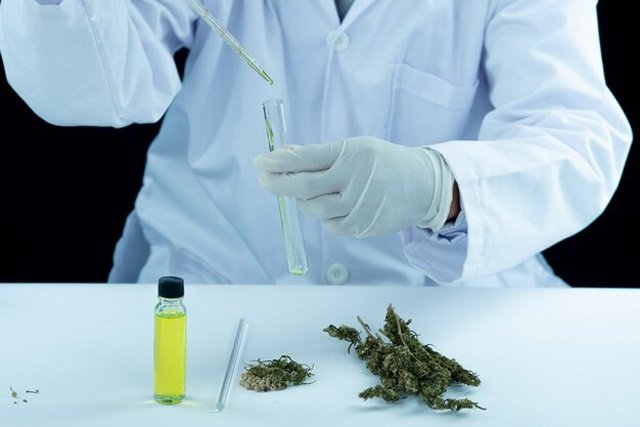In recent years, the landscape of cannabis cultivation has evolved significantly, offering consumers an extensive array of strains with distinct characteristics. Whether you’re a seasoned cannabis enthusiast or a curious newcomer, navigating the plethora of options available at dispensaries can be a daunting task. A common debate within the cannabis community centers around the differences between indoor and outdoor cultivation. In this comprehensive guide, we’ll explore the nuances of growing weed indoor vs outdoor, shedding light on the visual cues, quality factors, and debunking common myths.
1- The Rich History of Weed

Cannabis, with its psychoactive and medicinal properties, has a history dating back to 4000 B.C. in China. Fast forward to today, and the cannabis market is flooded with a diverse range of strains cultivated in various environments. Indoor vs outdoor cultivation of weed are the two primary methods, each presenting its unique set of characteristics.
Read More: How Long Does Weed Stay in The System
2- Visual Clues

Distinguishing between indoor vs outdoor-grown weed often begins with visual cues.
- Size: Key differentiators include size, with outdoor buds generally larger and chunkier, accompanied by thicker stems. Indoor buds, on the other hand, tend to be smaller and denser.
- Trichome Density: Another crucial factor is trichome density, which is higher in indoor buds due to the controlled environment.
- Color: The color of the buds, ranging from dark hues in outdoor cannabis to brighter, more vivid shades in indoor varieties, also provides insight into their cultivation origin.
3- Cannabinoid and Terpene Profiles

A prevailing myth suggests that outdoor-grown weed is less potent than its indoor counterpart. However, experiments conducted by cultivators, such as Sunna Ra Acres, have debunked this notion.
- Natural Sunlight: Exposure to natural sunlight during outdoor cultivation can enhance the overall cannabinoid profile, resulting in higher levels of THC, CBD, and other compounds.
- Terpene Intensity: Similarly, terpenes, responsible for the aromatic profile of cannabis, are intensified by the sun, contributing to a more flavorful and aromatic experience.
4- Trimming and Quality Factors

While the trim job is subjective, historically, outdoor growers tend to spend less time trimming their products compared to meticulous indoor growers.
- Trimming Process: Understanding the trimming process can provide immediate visual cues differentiating between indoor vs outdoor weed.
5- Greenhouse Cultivation

An elephant in the room often overlooked is greenhouse cultivation, combining the best of both worlds—environmental control similar to indoor setups and the power of natural sunlight.
- Bag Appeal: Greenhouse-grown cannabis often boasts the bag appeal of indoor varieties while exhibiting elevated terpene and cannabinoid profiles akin to outdoor cultivation.
6- Dispelling Myths

Addressing common misconceptions, such as the belief that brown weed is of inferior quality, is essential.
- UV Rays and Color: Factors like UV rays from the sun contribute to cannabinoid breakdown, influencing the color of cannabis.
- Quality Determinants: Additionally, the article clarifies the factors that determine the quality of weed like genetics, grower experience, and care, rather than the indoor or outdoor cultivation method.
Read More: Is There Recreational Weed Delivery in New Jersey?
7- Cannabis Culture Insights

Taking a closer look at the insights shared by Canna Culture, a San Jose-based dispensary, the guide explores the basic differences between indoor and outdoor cultivation.
- Features of Outdoor-Grown Plants: Darker leaves, looser flower consistency, and larger buds.
- Features of Indoor-Grown Plants: Brighter coloration, tighter-packed buds, and higher trichome density.
8- Trichomes and Their Significance

Let us Delve into the importance of trichomes; the guide explains the role of gland-like structures where cannabinoids and terpenes are.
- Trichome Density: Trichome density serves as a visual indicator of cannabis quality, with properly grown indoor weed generally displaying higher trichome density compared to outdoor varieties.
9- Cultivation Costs and Environmental Impact

The guide provides a comprehensive analysis of the cost-effective nature of outdoor grows, emphasizing the use of natural sunlight, organic soil compounds, and water.
- Economic and Environmental Factors: While outdoor cultivation is touted as more economical and environmentally friendly, indoor grows offer precise control over variables like temperature, humidity, and light intensity.
- Trade-Offs: The trade-offs between these two methods are explored, providing readers with a nuanced understanding of the cultivation landscape.
10- Making Informed Choices

For consumers navigating the myriad strains available at dispensaries, the guide offers practical advice on determining weed quality.
- Color Myth: Dispelling the notion that color is a definitive indicator, it emphasizes the significance of factors like bud density, aroma, trichome density, and proper curing.
- Sensory Perceptions: The article equips readers with the knowledge to make informed choices based on sensory perceptions.
11- Difference Between Outdoor and Indoor Weed

As the guide draws to a close, it explores a New York-centric perspective on the impending legalization of recreational cannabis.
- Quality Perception: It tackles the common misconception that indoor-grown weed is always superior to outdoor varieties.
- Grower’s Role: Highlighting the role of growers in shaping the final product, the guide reinforces the idea that quality cannabis can be cultivated both indoors and outdoors.
Read More: How to Detox from Weed: Quick & Effective Strategies
Conclusion
Demystifying the intricacies of cannabis cultivation, this comprehensive guide serves as a valuable resource for consumers and enthusiasts alike. From visual cues and quality factors to environmental impacts and common myths, readers gain a holistic understanding of the diverse world of indoor and outdoor cannabis cultivation. As the cannabis industry continues to evolve, informed consumers armed with this knowledge are better equipped to navigate the flourishing market. Whether enjoying the fruits of cultivation indoors or basking in the sun-kissed flavors of outdoor-grown strains, this guide empowers individuals to make choices aligned with their preferences and values in the ever-expanding world of cannabis.




